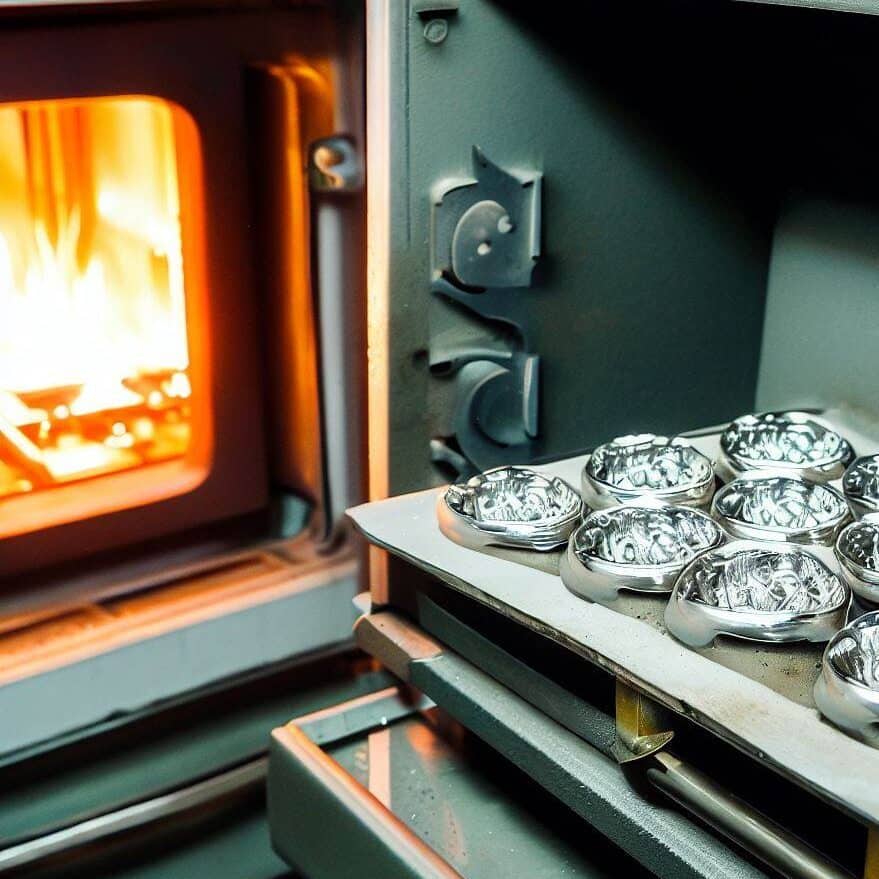Jewelry Oven
A jewelry oven is a device used to heat metal and melt it into a lost wax mold. There are different types of ovens, such as electric, gas, or induction ovens. The ovens must have temperature control and a safety system to prevent accidents.
Uses of a Jewelry Oven
A jewelry oven is an essential tool for jewelers and goldsmiths in the creation and manufacturing of jewelry. These ovens are designed to reach high temperatures and are used for various processes that require controlled heat in the handling of precious metals and other materials used in jewelry making.
Below are some of the main functions and uses of a jewelry oven:
Casting
One of the main uses of the jewelry oven is the casting of precious metals such as gold, silver, platinum, and other alloys. Casting involves heating the metal to its melting point to convert it into a liquid state, allowing it to be molded into different shapes to create jewelry components, such as ingots, plates, wires, or pieces for further manufacturing steps.
Soldering
The jewelry oven is also used for soldering metal pieces. Soldering involves heating two or more metal parts so that they join together by melting a filler metal. This process is essential for connecting and assembling smaller and delicate components that make up a piece of jewelry.
Annealing
Annealing is a controlled heating process used to soften the metal and reduce its hardness. This is especially useful when working with metals that have been hardened due to forging or hammering techniques. The jewelry oven allows annealing the pieces to make them easier to work with and apply additional techniques.
Enameling
Some jewelry techniques require the use of enamel, which is a vitreous substance applied to the metal and fused with heat to create colors and decorative effects. The jewelry oven is used to heat the enamel until it melts and adheres to the metal.
Tempering
Tempering is a process in which the metal is heated to a high temperature and then quickly cooled to improve its hardness and strength. This can be used in some specific jewelry designs that require certain mechanical properties.
Crucibles and other uses
Jewelry ovens are also used to heat crucibles, heat-resistant containers used to melt small amounts of precious metals, or perform alloy tests.
A jewelry oven is an essential tool that allows jewelers to precisely control high temperatures needed for processes such as casting, soldering, annealing, and enameling, among others. These ovens enable the creation of unique jewelry pieces and the application of different techniques that make artistic and creative expression possible in jewelry manufacturing.
Using the Jewelry Oven
To use a jewelry oven, follow these steps:
- Prepare the lost wax mold with the piece you want to cast and place it on a casting tree. This is a metal support that allows distributing the liquid metal throughout the mold.
- Place the casting tree in a vacuum bell jar and connect a vacuum pump. This is to remove air from the mold and prevent bubbles or defects in the final piece.
- Turn on the oven and adjust the temperature according to the type of metal you are using. For example, gold requires a temperature of about 1064 °C, while bronze requires about 950 °C. Insert the casting tree into the oven and close the door.
- Let the oven heat for the necessary time for the wax to melt and come out through the mold's holes. This time may vary depending on the size and shape of the piece but is usually around 30 to 60 minutes.
- Remove the casting tree from the oven using tongs and place it in a centrifuge. This is a machine that spins at high speed and injects the liquid metal into the mold by centrifugal force.
- Allow the metal to cool and solidify inside the mold. This may take around 10 to 15 minutes. Carefully break the mold and extract the metal piece. Clean it with a brush or sandpaper to remove any remaining refractory material and sprues.
- Polish and shine the piece with a polisher or soft cloth. You can also apply a finish such as gold plating or a patina to add color or special effects.
These are the basic steps for using a jewelry oven, but there may be some variations depending on the type of oven, metal, or mold you use. I recommend consulting the oven manufacturer's instructions and following appropriate safety measures. You can also watch some tutorial videos online to learn more about this technique.


Sandra Sanchez
Sandra is passionate about jewelry and interior design. She graduated in interior design from Universidad Taller 5 in Colombia and has completed several courses and postgraduate studies in Jewelry in Barcelona and Madrid, Spain. She combines her work as a jeweler and interior designer with teaching.